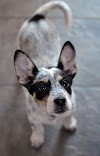The Chianina is possibly one of the earliest cattle breeds in existence. They received admiration from Columella and Vergil, two Georgic poets, and served as the inspiration for Roman sculptures. The breed evolved predominantly in western central Italy and was found in a wide range of climatic settings. Consequently, the size and type of cattle differ from region to region. The most prominent representatives of the breed, from the plains of Arezzo and Siena, provided the majority of foundation stock. The name derives from the Chiana Valley, where Chianti wine is produced in the Tuscany region of central Italy.
Chianinas are quite tall and broad with long, soft muscle fibers and rapid growth rates. The height of mature bulls at the withers is 180 cm (6 ft). The Chianina is a lean, uniformly sized animal with no excessive dewlap or brisket.
Their skin pigmentation is mostly black, with black patterns on their tongue, palate, nose, eye area, and switch. They have a short, silky, white or grey coat.
The horns are short and black in young animals, turning white after two years. Chianinas mature slowly, making them ideal for producing yearling and older beef.
Advantages
Excellent Size and Strength
Cattle from the Chianina breed are recognized for their outstanding strength and stature. They are one of the biggest breeds of cattle in the world and can weigh up to 2,200 lbs. or more. They are advantageous in tasks that call for heavy pulling or carrying, like plow work and moving large loads.
Production of Premium Meat
The high quality of the meat produced by Chianina cattle is one of their main advantages. The meat is renowned for being tender, lean, and cholesterol-free. This quality has increased their popularity in the beef industry because consumers who value healthier protein options prefer the meat.
Adaptation to Extreme Conditions
Over the years, Chianina cattle have become resilient to a variety of environmental factors. They have a remarkable capacity for adjusting to hard settings, making them suitable for both hot and cold environments. For cattle ranchers in various geographical areas, this adaptability might be advantageous.
Cross-Breeding Potential
Crossbreeding projects frequently use the Chianina breed to improve particular qualities in other cattle breeds. The genes associated with their large size and high meat quality can be passed on to offspring, improving meat production in other breeds. The overall cattle industry benefits from this advantage.
Disadvantages
Temperament issues in certain lineages
There are some Chianina bloodlines that might appear temperamental.
Need for tall fences
Chianina cattle must be kept within high fences because of their large size.
Large appetite
Chianina cattle have high appetites, which may lead to higher feed costs.
poor performance with insufficient management
Cattle from the Chianina breed might not perform well with poor management.











0 Comments